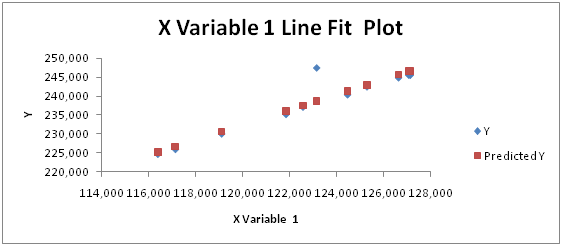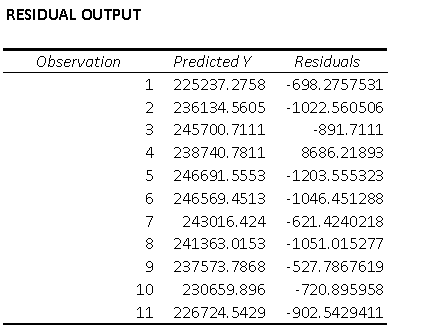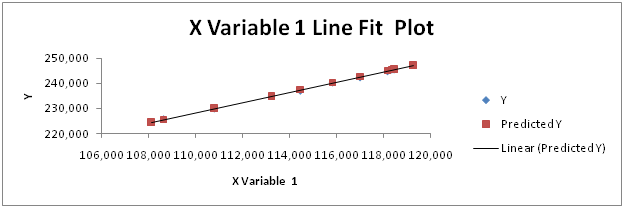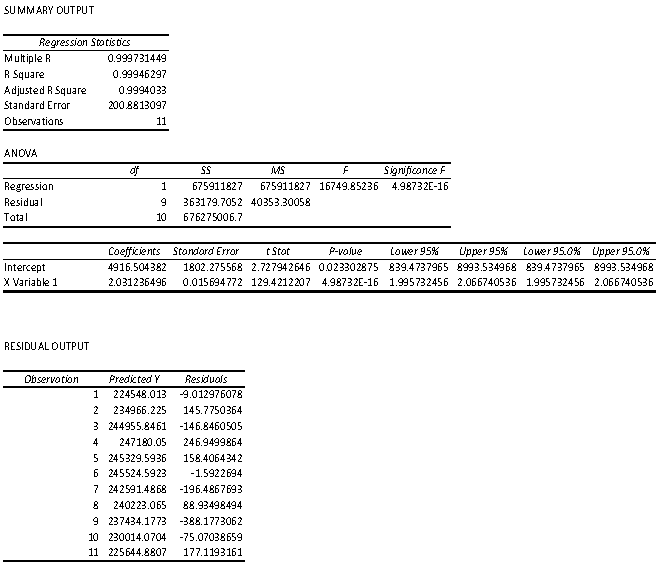Business Analytics Assignment: Case Analysis of Amazon’s OTT Platform, Prime
Question
Task: For this business analytics assignment, you are required to submit a report on the study of the business analytics practices of a real company or organization.You are required to find a company who publicly shares their data sets.
Your report must contain your own analysis and not just describe the current analysis and practices in the company.
This means you need to show the impact of your analysis and explain new insights/ recommendations that are based on your analysis. Your report must explain how your analysis improved the decision making and performance of the company. You should include recommendations and new insights based on your analyses in your report.
Answer
1. Introduction
The lockdown period has erupted digital presence in human's life significantly. OTT platforms have seen exponential growth within the past two-three years. The technological advancement and current ecosystem have enhanced the telecommunication system and its services. The shift from traditional media to OTT platforms remarkably increased during the Covid-19 situation (Gupta & Singharia, 2021). However, the marketing analysis of any brand is based on its reach and customized content. Amazon is the chosen company in the current assessment, and its OTT platform, Prime, is the service. The evaluation will analyze the Singaporean market's demographics to target a specific target audience to increase the number of users. The primary marketing strategy has been decided as the free one month trial of Amazon Prime. The current assessment will conduct data regression to assess data on the market demographics.
2. Company Information
Amazon prime video is a popular paid video streaming program. Amazon is a well-established e-commerce retail platform. The service of the company is available worldwide. Amazon launched the Amazon prime service in 2006. The OTT, or over-the-top platform of Amazon, offers various audio and video hosting services (Zhang et al., 2020). The streaming service was started as a hosting platform. Later the company transformed and began to produce documentaries, short films, web-series, and more.
Amazon prime video also provides one time one month free trial for every registered user. Online video streaming platforms are now a new medium to watch movies or videos. In Singapore, the revenue of Video Steaming is increasing its popularity. The estimated revenue of the video streaming segment in Singapore reached US$92 only in 2021(Keshvadi & Williamson, 2020). The expected growth of the video streaming platform can be up to US$166m by the end of 2025 (Keshvadi & Williamson, 2020). The continuous development of online video streaming boosted because of the growing online platforms such as Amazon Prime and Netflix.
The main competitor of Amazon prime video is Netflix. Other competitors are meWatch, HBO, Viu, etcetera. Amazon excellent video provides uninterrupted entertainment services that are also incorporated with conventional TV channels. The services that the company is providing are user-friendly and easy to use. It helps every customer can use the application irrespective of the age group. The 30days trial service is a beneficial strategy for Amazon to keep the trust of the subscribers. It helps the user explore the various features and service lists present in Amazon prime video. It aims to make the user trust more in the company and influenced by the service provided. The company's free trial service is to understand the customer's choice and behavior to be a paid member. The service is designed in such a way where people are offered to choose their suitable content. The trial enables the user to access all free available content. It helps the user to make successful decisions (Dong et al., 2018). Amazon Prime Video provides cross-platform multiple screen access from a single account. The standard subscription enables this service. The primary helpful feature that the company offers is the auto-renewal of the platform. The company automatically charges for the plan selected initially while using a free trial. It helps the user to cancel the subscription before the membership ends (Barman & Martini, 2019). Amazon Prime charges $2.99 for a month while Netflix charges $11.98 for a month. Viu charges $7.98, and meWatch charges $5.98 for a month. Amazon prime video can hold the online video streaming platform by offering the lowest price.
3. Problem Identification
The main identified problem is Amazon Prime video offers Prime membership for $2.99 in Singapore. It is the promotional price. Amazon Prime targets increasing the membership price and making it $8.99 per month (Isa et al., 2020). It can give the subscriber to compare the price rate between video streaming platforms. Netflix is the most accepted and famous OTT platform in Singapore. The subscription price ranges from $11.98 to $19.98. Amazon prime video only achieved a 6.5 overall score concerning its competitor (Sivamol & Suresh, 2019). Amazon's excellent video subscription price rate is less; thus, the customer tends to pay for the membership.
The increment of the price can challenge the environment of the business. It also gives the customer the scope of comparing other online video streaming platform with Amazon Prime Video. Amazon prime video offers parental control and offline viewing options. It also provides a wide range of movie and series lists, but the competitor companies offer less advertisement, intuitive recommendation tools (Fitzgerald, 2019). The quality of the amazon prime video does not depend on the price range. The quality depends on the network connection speed of the user. Amazon Prime Video does not yet introduce the ultra HD or 4k quality.
The increase of the membership price rate needs to include more user-friendly offers. The other problem of the business analysis that is being faced is the incomplete documentation of the analysis process, poorly design business needs, and the capability to solve the existing problem (Rahe et al., 2020). In resolving the mentioned problem, it is essential to establish the root cause of the created issue. The business analysis's main aim is to increase the subscriber rate of Amazon Prime Video in Singapore. The market of online video streaming is overly controlled by the other OTT platform such as Netflix.
The primary objective to increase the market share of Amazon prime video is to attract Singapore citizens to experience the online and conventional TV channel experience together. It is imperative to keep in mind that the business analyst can complete the appropriate data collection and analysis process. The analysis process will help establish information that will help the company monitor the result and increase the success rate—free online video streaming sites wide range of competition to Amazon Prime Video. The business analysis process and the collection of data need to be conducted to collect Singapore's demographical data. Amazon prime video focuses more on quality than quantity. Thus low-cost vast content platform can easily attract customers. The free trial for 30 days with annual payment choices helps the user to take the membership with appropriate decisions.
4. Literature Review
In the current business analytics assessment, the chosen topic is emerging OTT platforms in the Singaporean market – Amazon Prime. After the Covid-19 pandemic outbreak, people around the world became more reliant on home-based entertainment systems. The reason behind choosing streaming services from Amazon Company is to understand its current market share and provide recommendations in assessing future market growth. The literary understanding of the current topic will be –
According to a study by (Lobato & Sarkar, 2019), OTT or Over The Top platforms have become the new TV Box to a large audience. The article has discussed a submarket of Android TV sets besides the traditional television market in attracting a large audience segment. It makes the OTT platforms like Amazon Prime in promoting their services compared with the legal cable services.
A study conducted by (Wayne, 2018) said that the branding of SVOD or Subscription Video on Demand portals are commonly noted as Amazon and Netflix. Simultaneously, Netflix is only known for promoting its quality in generating better and brand equity. However, Amazon Prime has established their brand identity by providing prime service with a streaming platform to attract consumers from the traditional television system.
According to (Hutchins et al., 2019), the emerging growth of OTT platforms with mobile video and Internet activities is becoming a significant development around the transmission, distribution, and media consumption industry. Amazon Prime videos alongside DAZN and Tencent Video has become a widely renowned capitalized service. They are intervening in the changing market experiences, such as how a video is running on different screens, identifying characteristics from OTT platforms, etcetera. The growing market of OTT platforms is reducing the boundaries of broadcasting media.
The current assignment is also based on the niche analysis of Amazon Prime by considering other OTT platforms to make a comparison. A study conducted among the Taiwan citizen by (Chen, 2019) defined that OTT platforms usually scores higher than the traditional TV networks among most of the dimensions and niches. However, the OTT platforms' significant influence assessment is aligned with some Western brands rather than any local entity. The competitive factors, such as diversity in content creation, news, movies and series, sports, make the user's gratification on the OTT platforms.
The data collected during the registration over various OTT platforms makes them secure a large number of data. According to (Fernández-Manzano & González-Vasco, 2018), the increasing growth of new technologies makes the market use big data in making accurate predictions. It helps in generating personalized content that pleases the audience. The data management systems on various platforms are commonly developed from social networks. Big data's influence manages media to analyze more of their customer's perceptions rather than creating content without any motive. According to (Aguiar & Waldfogel, 2018), Netflix has announced its expansion into 243 countries to dominate the OTT industry. Netflix is standing as a giant brand in front of other streaming platforms like Amazon Prime. The hegemony that Netflix has created makes other competitors insufficient in front of it. The vast expansion of Netflix's market generates the question of their marketing model and their capability to understand their target audience. On the other hand, the article has generated a burning question related to traditional mediums' unacceptability.
The analyses of existing relevant literature have established a clear understanding of the OTT platforms' current trend. It has been identified that Netflix is dominating the OTT market for a longer time. However, Amazon is famous for its e-commerce market, which covers more demographics than Netflix. Effective marketing and data analysis will help Amazon Prime in increasing its audience demography. The current assessment emphasizes the new market strategy from Amazon Prime in providing a one-month free trial and its potential audience demography.
5. Data Collection
Data collection in business analysis helps create strategic decisions and solves complex problems to achieve the company's ultimate goal. The data collection method will include a data regression process and ANOVA. The technique is used to form a predictive approach. It investigates the relationship between the target audience with independent variables or predictors. It aims to find the causal effect relationship between various variables (Doo et al., 2021). The benefit of using data regression is provided accurate indications between dependent and independent variables.
Another benefit is it indicates the strength of the impact of multiple variables on dependable variables. Amazon Prime Video data analysis will be conducted by collecting the data from the Singapore age group variable, literacy rate, and income rate variable (Song et al., 2019). Data collection by regressive method includes linear regression, logistic regression, elesticNet regression, Lasso regression, ridge regression, stepwise regression, polynomial regression, and logistic regression. It is essential to compare various models. It will help to analyze different metrics such as R-square, AIC, BIC, and error terms. The p-value in the chart will help to estimate the link between the sample and the large population. When the p-value of the collected data variables is less than the present significant level, it indicates that the sample data have proper evidence to eliminate the null hypothesis.
The data collection method is contained within the Singapore region. The use of Amazon prime video within the Singapore citizen can be estimated from the given data in the public data domain. Ten years of population growth are being collected to evaluate the population's development within the target audience. The target audience for the business analysis process is 20-24. The target age group's election showed that they are more inclined to use online video streaming platforms. The data collection will help to estimate the acceptance of the Amazon prime video and its business goal.
6. Analysis and Discussion
Data analysis and regression are essential for conducting any business planning. The effective decision-making process is a significant factor in the business intelligence (BI) area achieving sustainable growth (Jin & Kim, 2018). Big data analytics is essential for Amazon Prime in understanding their target consumer. In the current assignment, the Singaporean citizen's data has been divided into different social structures. The parameters are mainly regarding the age group, educational background, and financial condition. These three parameters are a collective environment among a large number of audiences. The data regression has been conducted through ANOVA to identify the standard errors and statistics on the current report's objectives.

Fig: Male Population Growth in Singapore (Last 10 years)
|
Regression Statistics |
|
|
Multiple R |
0.936289983 |
|
R Square |
0.876638932 |
|
Adjusted R Square |
0.862932146 |
|
Standard Error |
3044.594614 |
|
Observations |
11 |



Fig: Female Population Growth in Singapore (Last 10 years)

It can be accessed from the data analysis that the market demographics of Amazon Prime are as same as other OTT platforms. However, most of the audience is looking forward to engaging with economically sustainable subscription platforms rather than expensive ones. It is essential to provide high-quality content with the appropriate value. Amazon Prime is the cheapest OTT platform in Singapore, including SGD 2.99 per month. At the same time, other popular platforms like Netflix are charging three times more than this price. However, in a bigger picture, Netflix provides multiple screenings with full-HD features from one subscription. It is where Amazon lacks behind.
The regression business analysis showed the linear regression model. It is the most straightforward representation of the variables. The value of the column is called coefficient and denoted as a beta. The linear regressions coefficients are showing 2.031236496. The analysis indicates that it will grow with time, and the male and female citizens will be inclined to use the Amazon prime video in the future. However, when the coefficient shows zero, it indicates that it can remove the input variables that are present in the model. The available coefficient is not showing zero. Thus it cannot influence the input variables. The resulting product is raw and accurate. The decrease of the population in males and females indicates less acceptance of the latest online video streaming platform. Amazon Prime Video should continue the $2.99 for a subscription. The company can increase the price rate while integrating new features in the OTT platform. Linear analysis helps to predict the future of the company’s goal. It aims to find the casual relationship between single or multiple variables. It helps not only small as well as big businesses to set a goal and perfectly launch it. Business analysis helps to understand the factors that can impact that can either help the business or indicate the errors in the business planning.
7. Recommendation
The data collection process has been used to analyze the current reaching rate for Amazon prime video in Singapore in the report. For the report target group's age was 20-24years. The survey has been done by collecting data from internet sources then regression has been done. The collecting survey data indicates the literacy rate of 97.34% in the age group of 20-24 years. The income rate has been identified as a high class in Singapore's demography. Literacy rate and standardized income rate ensure the increasing use of Amazon prime video in the Singapore survey target group. Followings are the recommendation for Amazon excellent video reach increasing process –
- The effectiveness of the audio-visual platform depends on the service facility and quality. In the current scenario, market competition has been growing rapidly. Without modification maintaining the highest business position is quite impossible.
- Amazon prime should focus on developing the current business strategy. The company should focus on improving the service quality standard. As a comparison, Netflix Company always focuses on satisfying customer's needs. If Amazon Company also concentrates on the same objective, it will be more beneficial.
- Even Netflix Company has been developed an educational platform to improve the customer's learning process. If the Amazon Company produces more educational content, video in their service facility will attract more customers and increase company reach.
- If the Amazon Company uses ultra HD screen for their video, it will become an advantage for the business promotion. Amazon Company can achieve the highest business reach in Singapore by implementing an efficient strategic plan. Implementation of the various cultural fields, engaging customer content increases the space for the Amazon Company.
- Understanding customer need is equally important as the customer retention process. Netflix company use censor' cut process to standardize their business content. Amazon Company can use the censor's cut strategy to increase their business reach for the Singapore population.
- In Singapore, Amazon has the cheapest subscription facility with a one-month free subscription. Having this facility helps the company to attract more customers for their subscription. Amazon Company provides 2.99 Singaporean dollars in Singapore's economy. Amazon Company can use the best quality principle at the cheapest rate to establish a great value for the business reach enhancement.
8. Conclusion
The data regression regarding Singapore's residence and Amazon Prime's market share explained a positive change for the OTT platform to shine in Singapore's market. The market reach of the e-commerce brand Amazon is enormous. However, Amazon Prime has been lacking behind capturing the latest market trend for a longer time. The recommendations analyzed from the current assignment identified the improvement factors of Amazon Prime, which will help them in growing their market. The practical data analysis from the consumers in creating customized content will help them in sustaining customer satisfaction. On the other hand, Amazon Prime is the cheapest subscription among other OTT platforms in Singapore. Therefore, it can generate better market exposure in providing quality content at a great value.
9. References
Aguiar, L., & Waldfogel, J. (2018). Netflix: global hegemon or facilitator of frictionless digital trade? Journal of Cultural Economics, 42(3), 419–445.
Barman, N., & Martini, M. G. (2019). Qoe modeling for HTTP adaptive video streaming–a survey and open challenges. Ieee Access, 7, 30831–30859.
Chen, Y.-N. K. (2019). Competitions between OTT TV platforms and traditional television in Taiwan: A Niche analysis. Telecommunications Policy, 43(9), 101793.
Dong, Y., Hu, H., Wen, Y., Yu, H., & Miao, C. (2018). Personalized emotion-aware video streaming for the elderly. International Conference on Social Computing and Social Media, 372–382.
Doo, I. C., Shin, H. D., & Park, M. H. (2021). Automated Product Review Collection and Opinion Analysis Methods for Efficient Business Analysis. International Journal of Computing and Digital Systems, 10(1), 37–45.
Fernández-Manzano, E.-P., & González-Vasco, M.-I. (2018). Analytic surveillance: Big data business models in the time of privacy awareness. El Profesional de La Información (EPI), 27(2), 402–409.
Fitzgerald, S. (2019). Over-the-Top Video Services in India: Media Imperialism after Globalization. Media Industries Journal, 6(2), 0.
Gupta, G., & Singharia, K. (2021). Consumption of OTT Media Streaming in COVID-19 Lockdown: Insights from PLS Analysis. Vision, 0972262921989118.
Hutchins, B., Li, B., & Rowe, D. (2019). Over-the-top sport: live streaming services, changing coverage rights markets and the growth of media sport portals. Media, Culture & Society, 41(7), 975–994.
Isa, A. M., Mahmud, W. A. W., & Sulaiman, W. I. W. (2020). The Combining of Intrinsic and Extrinsic Motives for Employing OTT Media and Comprehending the Audience’s Gratification in Malaysia. Jurnal Komunikasi: Malaysian Journal of Communication, 36(3).
Jin, D.-H., & Kim, H.-J. (2018). Integrated understanding of big data, big data analysis, and business intelligence: a case study of logistics. Sustainability, 10(10), 1–15. Keshvadi, S., & Williamson, C. (2020). MoVIE: A Measurement Tool for Mobile Video Streaming on Smartphones. Proceedings of the ACM/SPEC International Conference on Performance Engineering, 230–237. Lobato, R., & Sarkar, P. (2019). The OTT TV Box as a Diasporic Media Platform. Media Industries Journal, 6(2).
Rahe, V., Buschow, C., & Schlütz, D. (2020). How users approach novel media products: Brand perception of Netflix and Amazon Prime video as signposts within the German subscription-based video-on-demand market. Journal of Media Business Studies, 1–14.
Sivamol, S., & Suresh, K. (2019). Personalization Phenom: User-centric Perspectives towards Recommendation Systems in Indian Video Services. SCMS Journal of Indian Management, 16(2), 73–86.
Song, Y., Mao, F., & Liu, Q. (2019). Human comfort in indoor environment: a review on assessment criteria, data collection and data analysis methods. IEEE Access, 7, 119774–119786.
Wayne, M. L. (2018). Netflix, Amazon, and branded television content in subscription video on-demand portals. Media, Culture & Society, 40(5), 725–741.
Zhang, M., Qin, F., Wang, G. A., & Luo, C. (2020). The impact of live video streaming on online purchase intention. The Service Industries Journal, 40(9–10), 656–681.
Aguiar, L., & Waldfogel, J. (2018). Netflix: global hegemon or facilitator of frictionless digital trade? Journal of Cultural Economics, 42(3), 419–445.
Barman, N., & Martini, M. G. (2019). Qoe modeling for HTTP adaptive video streaming–a survey and open challenges. Ieee Access, 7, 30831–30859.
Chen, Y.-N. K. (2019). Competitions between OTT TV platforms and traditional television in Taiwan: A Niche analysis. Telecommunications Policy, 43(9), 101793.
Dong, Y., Hu, H., Wen, Y., Yu, H., & Miao, C. (2018). Personalized emotion-aware video streaming for the elderly. International Conference on Social Computing and Social Media, 372–382.
Doo, I. C., Shin, H. D., & Park, M. H. (2021). Automated Product Review Collection and Opinion Analysis Methods for Efficient Business Analysis. International Journal of Computing and Digital Systems, 10(1), 37–45.
Fernández-Manzano, E.-P., & González-Vasco, M.-I. (2018). Analytic surveillance: Big data business models in the time of privacy awareness. El Profesional de La Información (EPI), 27(2), 402–409.
Fitzgerald, S. (2019). Over-the-Top Video Services in India: Media Imperialism after Globalization. Media Industries Journal, 6(2), 0.
Gupta, G., & Singharia, K. (2021). Consumption of OTT Media Streaming in COVID-19 Lockdown: Insights from PLS Analysis. Vision, 0972262921989118.
Hutchins, B., Li, B., & Rowe, D. (2019). Over-the-top sport: live streaming services, changing coverage rights markets and the growth of media sport portals. Media, Culture & Society, 41(7), 975–994.
Isa, A. M., Mahmud, W. A. W., & Sulaiman, W. I. W. (2020). The Combining of Intrinsic and Extrinsic Motives for Employing OTT Media and Comprehending the Audience’s Gratification in Malaysia. Jurnal Komunikasi: Malaysian Journal of Communication, 36(3).
Jin, D.-H., & Kim, H.-J. (2018). Integrated understanding of big data, big data analysis, and business intelligence: a case study of logistics. Sustainability, 10(10), 1–15. Keshvadi, S., & Williamson, C. (2020). MoVIE: A Measurement Tool for Mobile Video Streaming on Smartphones. Proceedings of the ACM/SPEC International Conference on Performance Engineering, 230–237. Lobato, R., & Sarkar, P. (2019). The OTT TV Box as a Diasporic Media Platform. Media Industries Journal, 6(2).
Rahe, V., Buschow, C., & Schlütz, D. (2020). How users approach novel media products: Brand perception of Netflix and Amazon Prime video as signposts within the German subscription-based video-on-demand market. Journal of Media Business Studies, 1–14.
Sivamol, S., & Suresh, K. (2019). Personalization Phenom: User-centric Perspectives towards Recommendation Systems in Indian Video Services. SCMS Journal of Indian Management, 16(2), 73–86.
Song, Y., Mao, F., & Liu, Q. (2019). Human comfort in indoor environment: a review on assessment criteria, data collection and data analysis methods. IEEE Access, 7, 119774–119786.
Wayne, M. L. (2018). Netflix, Amazon, and branded television content in subscription video on-demand portals. Media, Culture & Society, 40(5), 725–741.
Zhang, M., Qin, F., Wang, G. A., & Luo, C. (2020). The impact of live video streaming on online purchase intention. The Service Industries Journal, 40(9–10), 656–681.












